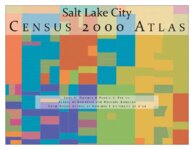TO
Filters: Collection: "ir_eua"
| Title | Date | Subject | Description | ||
|---|---|---|---|---|---|
| 1 |
 |
2011 Group Ticket Pricing (UUSAC) | 2011 | Group ticket pricing for the Rio Tinto stadium in 2011 | |
| 2 |
 |
Accelerating deployment of retrofitable CO2 capture technologies through predictivity: (Simulation, verification, validation / uncertainty quantification) - 2010 Annual report (for year 1 of 3) to DOE NNSA from The University of Utah | 2011 | CO2; CO2 capture technologies; predictivity; fossil-fuel utilization | There is an ever increasing national awareness that an effective, sustainable energy future must include fossil-fuel utilization that deploys cost-efficient technologies (both new and retrofit) that significantly improve energy efficiencies and reduce CO2 emissions over existing electric power and t... |
| 3 |
 |
Census 2010 - a first look at Utah results | 2011 | Census; 2010; Utah; Demographics; Population; Age; Sex; Race; Ethnicity | Early results from the long-awaited 2010 Census are revealing the outlines of the more detailed portrait that will not be available for at least a couple more years. This essay reviews the top-level population change and geographic distribution results primarily from the redistricting data set.1 We ... |
| 4 |
 |
Fast-tracking Wasatch Front transit investments: economic and demographic impacts of a 2025 build-out | 2011 | Over the next 30 years, the Wasatch Front will significantly expand its transit network. Plans include the construction of an additional 25 miles of light rail, 76 miles of commuter rail, 227 miles of bus rapid transit, and 29 miles of mountain transportation rail line. These projects will be built ... | |
| 5 |
 |
Solar Parking Project | 2011 | Solar Energy; Parking; University of Utah | Feasibility study to install photo voltaic structures at the University of Utah. |
| 6 |
 |
Atomistic modeling of oil shale kerogens and asphaltene along with their interactions with the inorganic mineral matrix | 2011-04 | atomistic modeling; oil shale kerogens and asphaltene; inorganic mineral matrix | The goal of this project is to obtain and validate three dimensional atomistic models for the organic matter in both oil shales and oil sands. In the case of oil shales the modeling was completed for kerogen, the insoluble portion of the organic matter; for oil sands it was for asphaltenes, a class ... |
| 7 |
 |
Attachment 2 - Statement of program objectives clean and secure energy from domestic oil shale and oil sands resources | 2011-12 | ICSE; Oil shale research; Energy; Oil sands resources; Domestic oil shale; Environmental impact; Basin scale simulation; Liquid fuel production; In-situ thermal processing; Environmental; Legal; Policy issues; University of Utah | This Statement of Project Objectives (SOPO) reflects the performance period from October 1, 2010 through September 30, 2013. It includes tasks/subtasks funded in fiscal year 2009 (Phase 1) and tasks/subtasks funded in fiscal year 2010 (Phase II). Tasks/subtasks initiated during Phase I that are anti... |
| 8 |
 |
Chemical looping combustion reactions and systems: Task 5 topical report | 2011-08 | Chemical looping combustion; CLC; Fuel combustion; CO2 capture; Electric power; Sequestration; FBR; CLOU; Thermogravimetric analysis; CO2; Carbon dioxide | Chemical Looping Combustion (CLC) is one promising fuel-combustion technology, which can facilitate economic CO2 capture in coal-fired power plants. It employs the oxidation/reduction characteristics of a metal, or oxygen carrier, and its oxide, the oxidizing gas (typically air) and the fuel source ... |
| 9 |
 |
Clean and secure energy from domestic oil shale and oil sands resources: Quarterly progress report: July 2011 to September 2011 | 2011-09 | ICSE; University of Utah; Uinta Basin; Oil and gas production; Utah Division of Oil, Gas, and Mining; NOx emissions; American Shale Oil; AMSO; Flameless oxy-gas process heaters; Efficient CO2 capture | The Clean and Secure Energy from Domestic Oil Shale and Oil Sands Resources program is part of the research agenda of the Institute for Clean and Secure Energy (ICSE) at the University of Utah. In this quarter, the Clean and Secure Energy program cosponsored the 2011 Energy Forum, which was held in ... |
| 10 |
 |
Clean and secure energy from domestic oil shale and oil sands resources: Quarterly progress report: October 2010 to December 2010 | 2011-01 | ICSE; Oil shale; Oil sands; University of Utah; Marriott Library; Macroscale CO2 analysis; CO2 capture; Flameless oxy-gas process heaters; Liquid fuel production; In-situ thermal processing | The Clean and Secure Energy from Domestic Oil Shale and Oil Sands Resources program is part of the research agenda of the Institute for Clean and Secure Energy (ICSE) at the University of Utah. In this quarter, the Clean and Secure Energy program circulated External Advisory Board recommendations an... |
| 11 |
 |
Control of geological carbon sequestration in the western United States | 2011-05 | coal; carbon dioxide; electric utilities; carbon sequestration; sequestration; geological sequestration; climate change | In the near future, the use of coal may be legally restricted due to concerns over the effects of its combustion on atmospheric carbon dioxide concentrations. Carbon capture and geologic sequestration offer one method to reduce carbon emissions from coal and other hydrocarbon fuel. While the federal... |
| 12 |
 |
Core-based integrated sedimentologic, stratigraphic, and geochemical analysis of the oil shale bearing Green River Formation, Uinta Basin, Utah | 2011-04 | Utah; Green River Formation; Lake Uinta; Mahogany zone; Lake evolution; Oil shale development; Uinta Basin | An integrated detailed sedimentologic, stratigraphic, and geochemical study of Utah's Green River Formation has found that Lake Uinta evolved in three phases 1) a freshwater rising lake phase below the Mahogany zone, 2) an anoxic deep lake phase above the base of the Mahogany zone and 3) a hypersali... |
| 13 |
 |
Efficient parallelization of RMCRT for large scale LES combustion simulations | 2011-06 | monte carlo; RMCRT; parallelization; large scale LES combustion; combustion simulations; radiation | At the high temperatures inherent to combustion systems, radiation is the dominant mode of heat transfer. An accurate simulation of a combustor therefore requires precise treatment of radiative heat transfer. This is accomplished by calculating the radiative-flux divergence at each cell of the discr... |
| 14 |
 |
Federal control of carbon capture and storage | 2011-09 | carbon capture; carbon storage; coal; carbon sequestration | The United States has economically recoverable coal reserves of about 261 billion tons, which is in excess of a 250-year supply based on 2009 consumption rates. However, in the near future, the use of coal may be legally restricted because of concerns over the effects of its combustion on atmospheri... |
| 15 |
 |
Federal control of geological carbon sequestration | 2011-04 | geological carbon sequestration; carbon sequestration; carbon dioxide capture; carbon dioxide storage | The United States has economically recoverable coal reserves of about 261 billion tons, which is in excess of a 250-year supply based on 2009 consumption rates. However, in the near future the use of coal may be legally restricted because of concerns over the effects of its combustion on atmospheric... |
| 16 |
 |
Gasification studies - Task 4 topical report, Utah Clean Coal Program, Reporting period October 2009 - July 2011 | 2011-10 | Gasification; pressurized entrained-flow coal gasifiers; coal | A key objective of the Task 4 activities has been to develop simulation tools to support development, troubleshooting and optimization of pressurized entrained-flow coal gasifiers. The overall gasifier models (Subtask 4.1) combine submodels for fluid flow (Subtask 4.2) and heat transfer (Subtask 4.3... |
| 17 |
 |
Land and resource management issues relevant to deploying in-situ thermal technologies: Topical Report: October 1, 2009 to December 31, 2010 | 2011-01 | in-situ; oil shale; domestic energy source; oil sands | Utah is home to oil shale resources containing roughly 1.3 trillion barrels of oil equivalent and our nation's richest oil sands resources. If economically feasible and environmentally responsible means of tapping these resources can be developed, these resources could provide a safe and stable dome... |
| 18 |
 |
Policy analysis of produced water issues associated with in-situ thermal technologies: Topical report: October 1, 2009 to December 31, 2010 | 2011-01 | topical report; produced water issues; in situ thermal technologies; oil shale/sands; water rights; domestic energy source | Commercial scale oil shale and oil sands development will require water, the amount of which will depend on the technologies adopted and the scale of development that occurs. Water in oil shale and oil sands country is already in scarce supply, and because of the arid nature of the region and limita... |
| 19 |
 |
Quarterly Progress Report Phase 3: Clean and Secure Energy from Coal - April 1, 2011 to June 30, 2011 | 2011-06 | domestic coal resources; CO2 capture; stationary power generation; Oxycoal Simulation | The University of Utah is pursuing research to utilize the vast energy stored in our domestic coal resources and to do so in a manner that will capture CO2 from combustion from stationary power generation. The research is organized around the theme of validation and uncertainty quantification throug... |
| 20 |
 |
Quarterly Progress Report Phase 3: Clean and Secure Energy from Coal - July 1, 2011 to September 30, 2011 | 2011-09 | domestic coal resources; CO2 capture; OFC | The University of Utah is pursuing research to utilize the vast energy stored in our domestic coal resources and to do so in a manner that will capture CO2 from combustion from stationary power generation. The research is organized around the theme of validation and uncertainty quantification throug... |
| 21 |
 |
Salt Lake City census 2000 atlas | 2011-03 | Demographics; Salt Lake City; Utah; Census | This volume presents the basic demographic characteristics of residents of Salt Lake City as recorded in the 2000 Census of Population and Housing. Every ten years these federal governm ent counts of people are the basis of congressional apportionment and political redistricting. Data in this volume... |
| 22 |
 |
State and regional control of geological carbon sequestration (Part I) | 2011-05 | state and regional control; geological carbon sequestration; hydrocarbon fuel; carbon capture; geologic sequestration | In the near future the use of coal may be legally restricted due to concerns over the effects of its combustion on atmospheric carbon dioxide concentrations. Carbon capture and geologic sequestration offer one method to reduce carbon emissions from coal and other hydrocarbon fuel. While the federal ... |
| 23 |
 |
State and Regional Control of Geological Carbon Sequestration Topical Report - Reporting Period July 1, 2008 to September 30 2010 | 2011-03 | control of geological carbon sequestration; IOGCC; Interstate Oil and Gas Compact Commission; CO2 emissions | The United States has economically recoverable coal reserves of about 261 billion tons, which is in excess of a 250‐year supply based on 2009 consumption rates. However, in the near future the use of coal may be legally restricted because of concerns over the effects of its combustion on atmospher... |
| 24 |
 |
2011 Unconventional Fuels Conference - Welcome/opening remarks | 2011-05-17 | unconventional fuels; opening remarks; coal; oil shale; power generation; transportational fuel infrastructures; carbon capture; agenda | Presentation given at the 2011 University of Utah Unconventional Fuels Conference. |
| 25 |
 |
A market assessment of heavy oil, oil sands, and oil shale resources | 2011-03-10 | unconventional fuels; market assessment; developing domestic heavy oil, oil sands, and oil shale resources; preliminary infrastructure needs | A presentation given at the Unconventional Fuels from Oil Shale and Oil Sands Project Review Meeting on March 10-11, 2011. |
